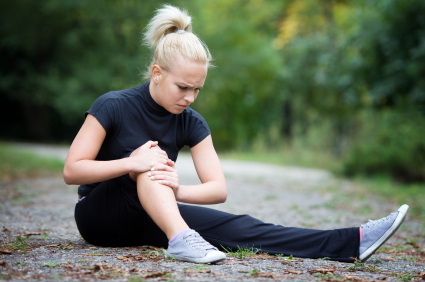Acupuncture and Isometric Exercises for Knee Osteoarthritis
Kristen Sparrow • June 11, 2013

Knee osteoarthritis has been one true success story for acupuncture research. In this study, they compare acupuncture and isometric exercise for knee osteoarthritis. Unfortunately, they don’t describe the isometric exercises well. At. all.
Int J Prev Med. 2013 Apr;4(Suppl 1):S73-7.
Comparison of the effects of acupuncture and isometric exercises on symptom of knee osteoarthritis.Saleki M, Ahadi T, Razi M, Raeisi GR, Forough B, Ali M
Department of Sport Medicine, School of Medicine, Isfahan University of Medical  Sciences, Isfahan, Iran.
Sciences, Isfahan, Iran.
BACKGROUND:
The investigation and comparison of the effects of acupuncture and isometric exercises on pain and quality of life in patients suffering from knee osteoarthritis (OA). OA is the most common form of joint disease and one leading cause of disability in the elderly. The symptoms of OA are pain, morning stiffness, and joint limited motion. Different treatments have been proposed for management of OA, but the results are not clear. We studied the effects of acupuncture and isometric exercises on symptoms of the knee OA.
METHODS:
Forty patients with knee OA according to, American college of rheumatology criteria were recruited using strict inclusion and exclusion criteria. All the patients were randomly divided into two groups (A and B).The acupuncture group (A) received only acupuncture at selected acupoint for knee pain. The exercise group (B) received isometric exercise of the knee. Each group received treatment 12 sessions for 4 weeks. Evaluating measuring tools were pain intensity and function was measured with knee injury and OA outcome score (KOOS) questionnaire.
RESULTS:
After treatment, acupuncture and in isometric exercise groups reported that KOOS increased significantly (improvement) in Quality of Life score as shown (P value <0.05). VAS of acupuncture group changed from 7.25 ± 0.91 to 5.41 ± 1.23.In additions, VAS in isometric exercise group changed from 7.85 ± 1.35 to 5.34 ± 1.26. Total KOOS scores have not shown significant difference in comparative with exercise group (P value > 0.11).
CONCLUSIONS:
Both acupuncture and isometric exercises decrease pain and increase quality of life in patients who suffer from OA.
http://www.ncbi.nlm.nih.gov/pmc/articles/PMC3665031/

